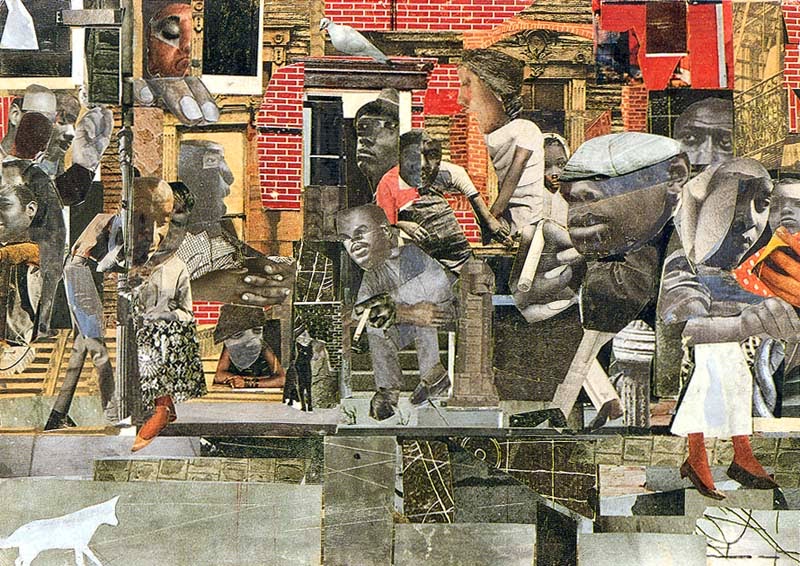Cityscapes: Romare Bearden
Romare Bearden (American, 1911–1988) used many different media in his visual works, including cartooning, oil painting, collage and murals. For many years Bearden was conflicted as to how much his work should move towards abstraction, a movement which was taken more seriously by the intellectuals of his day than figurative painting.
Looking back on his work now, it's easy to feel grateful that Bearden rejected abstraction in favor of showing his deep affection for the contemporary life around him. Beginning collage relatively late in life, he used it to depict the people and places most familiar to him, often in Harlem and Manhattan, but also the American South of his childhood and his grandparent's neighborhood in Pittsburgh.
Bearden's parents were politically active and college educated, and had high expectations for their son. As a young man, Bearden was a case worker for the New York Department of Social Services. During World War II, he fought on the European Front and later returned to Europe to study philosophy at the Sorbonne. In the 60s he formed a group called the Spiral, which met weekly to discuss the role of African-American artists in the civil rights movement as well as in the art world. In his work, one of Bearden's strengths was his ability to deftly focus on the particulars of contemporary African American life, while never losing sight of their participation in the universal themes central to all humanity.
Bearden's urban collages show the life around him as tightly interwoven and full of vital energy; he was an idealist but not a sentimentalist. His bold sense of reality combined with his unerring sense of texture, composition and echoing motifs make for powerful work, emotionally and aesthetically.
The Dove cut and pasted paper, gouache, and colored pencil on cardboard 13"x18" 1964
Springway collage on paperboard 1964
Black Manhattan paper and paint on board 25" x 21" 1969
Pittsburgh Memory collage 1964
The Block cut and pasted printed, colored and metallic papers, photostats, pencil, ink marker, gouache, watercolor, and pen and ink on Masonite; 48" x 216" (six panels, each: 48" x 36") 1971
The Block (detail)
The Block (detail)
The Block (detail)
The Block (detail)
The artist has to be something like a whale swimming with his mouth wide open, absorbing everything until he has what he really needs.
The artist confronts chaos. The whole thing of art is, how do you organize chaos?
Painting and art cannot be taught. You can save time if someone tells you to put blue and yellow together to make green, but the essence of painting is a self-disciplined activity that you have to learn by yourself.
-Romare Bearden

Romare Bearden in Harlem, circa 1950












Comments
Post a Comment